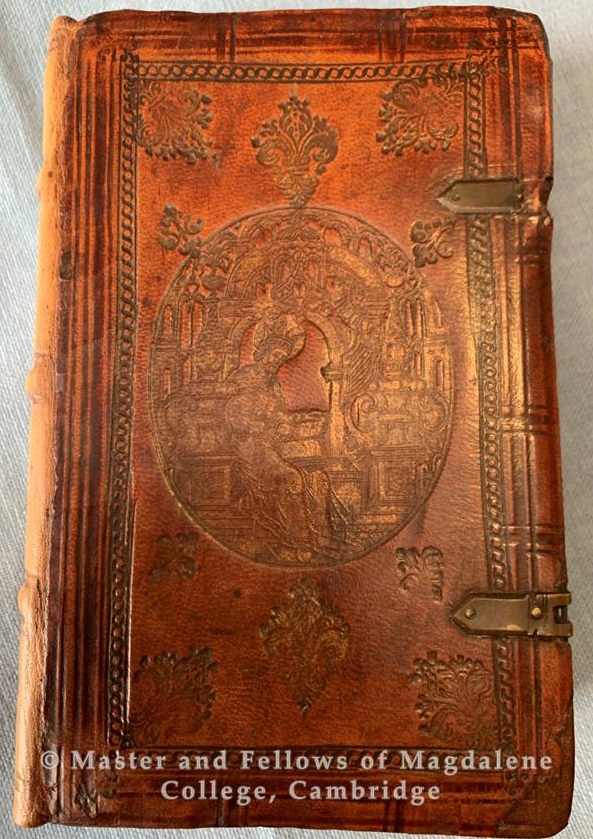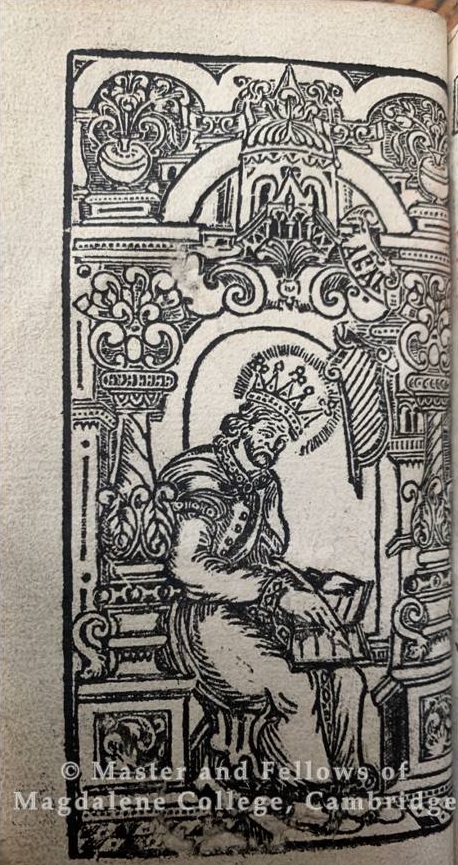
The presence of an early Slavonic book in Magdalene College Old Library is certainly something unexpected. This book of Psalms dating from 1595 forms part of a group of around a dozen 16th century Slavonic books which survive in Cambridge University Library or the older colleges of the University. In a survey of such books carried out in the 1960s by Tyrrell and Simmons, an explanation is given as to why some copies survive in Cambridge:
…Commercial contacts and philological and theological curiosity brought copies to the West where, thanks to the naturally conservative instincts of library custodians, they have slumbered undisturbed…[i]
These Slavonic books may well be ‘slumbering undisturbed’ due to the difficulties in cataloguing such books: apart from the specialist language skills needed, they are often unique copies with no other catalogue records of the same book to refer to. We are pleased to announce that, with the help of Milda Kvizikevičiūtė, the Slavonic book of Psalms in the Old Library has now been catalogued for researchers to find on the ‘idiscover’ catalogue.

The woodcut illustration on the first leaf of the book provides a visual clue to the book’s content: here we see King David with his crown and harp. A depiction of King David is also impressed onto the book’s front cover – the book’s original binding – using a panel stamp. This sort of decorative feature is often found on Church Slavonic books of this time. The image is exceptionally detailed compared to other book binding decoration of the 16th century, and stylistic parallels to orthodox iconography can also be drawn.
The ‘colophon’ – a statement giving details of the book’s publication, often found at the rear of the book in the early days of printing – features a date given in the ‘Mundane Era’ Calendar (‘ЗРГ’, the year 7103), also known as the Byzantine Calendar. This calendar was used in the Eastern orthodox church from c. 691 to 1728. The colophon gives the date of publication in the Julian Calendar as 26th September 1595, though this does imply a mistake in the printers’ calculations: the year 7103 is 1594 in the Julian Calendar.

How did this unusual item end up at Magdalene? Given the small number of Slavonic books of this age in college libraries, the transmission of these types of texts was evidently quite unusual. One clue is the inscription in the book in the hand of Daniel Waterland, Master of Magdalene from 1713 to 1740, so the book was certainly in the library from the 18th century at least. However, there could be a possible connection contemporary with the book’s publication. We know that Thomas Nevile, Master of Magdalene from 1582-1593 and Master of Trinity from 1593-1615, was given a Slavonic book of hours in 1599 from Mark Ridley, the English physician who practised in Russia from 1594-1599. This book is now in the Wren Library at Trinity College. Perhaps Magdalene’s book of Psalms was also acquired by Ridley, and given to the college via Nevile, who certainly donated other books to Magdalene. Although there is no material evidence on the book to confirm this, it is a likely scenario, give the scarcity of Slavonic books from this time in Cambridge libraries.
By Catherine Sutherland
Deputy Librarian, Pepys Library and Special Collections
[i] Tyrrell, E. P., and J. S. G. Simmons. “Slavonic books before 1700 in Cambridge Libraries” in Transactions of the Cambridge Bibliographical Society 3, no. 5 (1963): 382-400. Accessed July 29, 2020. http://www.jstor.org/stable/41155342.